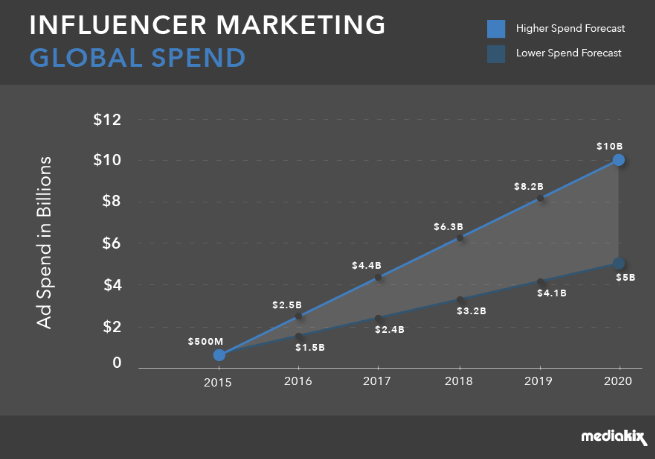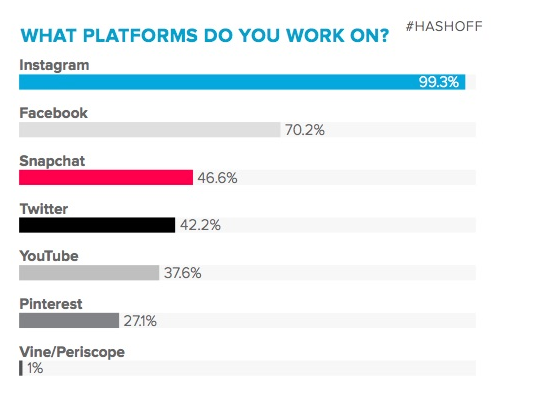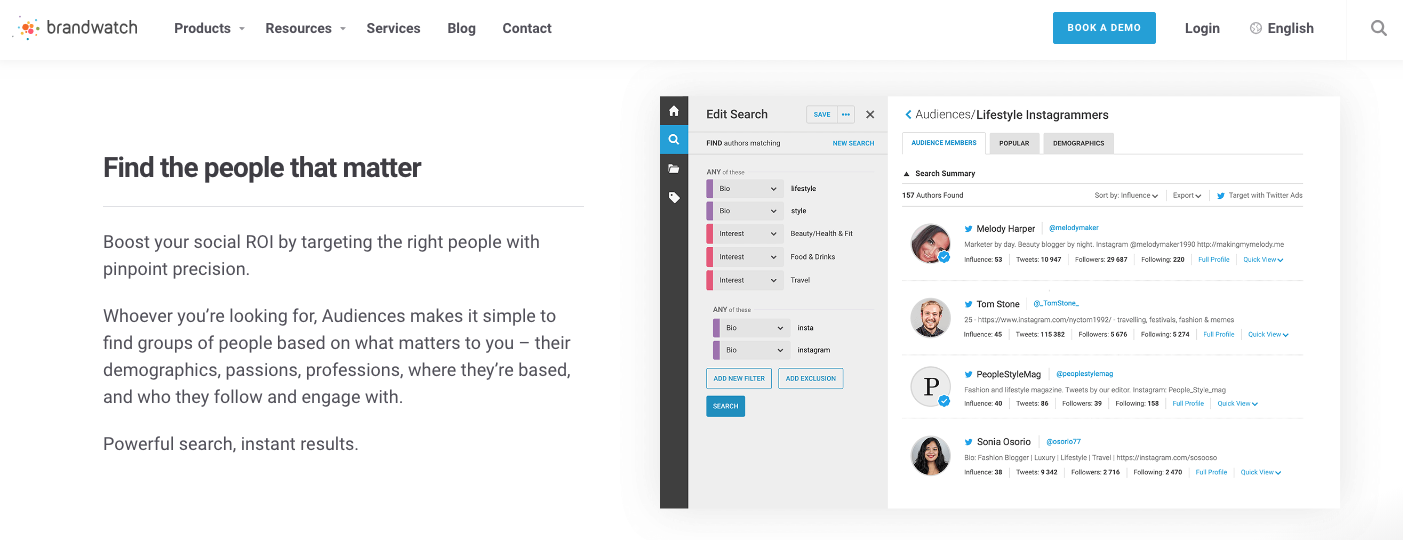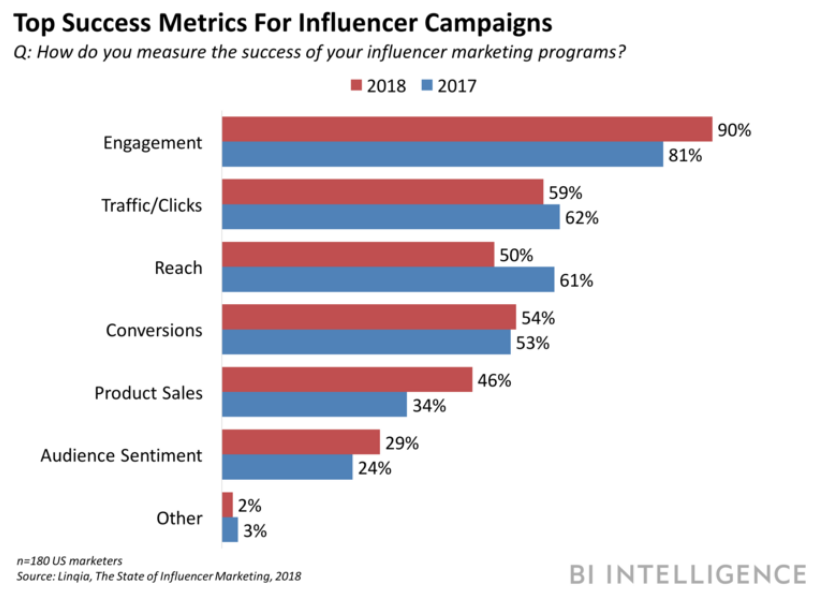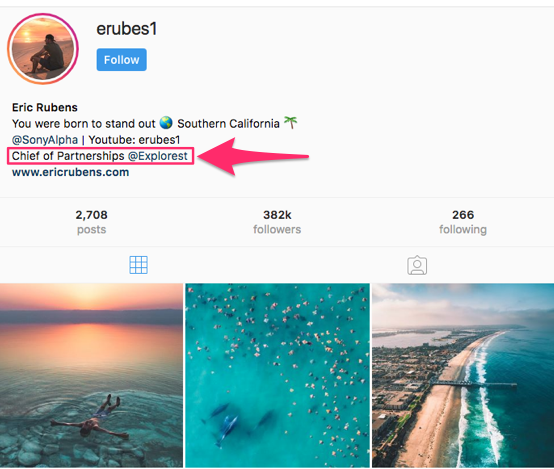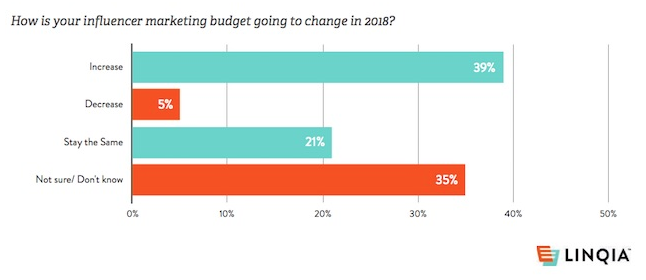How can you earn more money?
You’d think a question this simple would have a simple answer.
Yet experts’ attempts to explain the nuances of earning — whether disguised as personal finance, business management, or the importance of education — could fill a file server.
You could read all the articles, watch all the how-to videos, listen to all the podcasts, and even attend the right business school, but still not know the best ways to make money.
Why is it all so complicated?
I have an idea: It’s because only you are qualified to answer the question of how you can make more money.
Think about it:
Just like our relationships, our time, our food preferences, and even our financial choices are personal.
What works for me may not work for you.
Likewise, I might not survive a day doing something you’d excel at.
And while education, knowledge, and experience matter a lot, they are only the ingredients.
You have to get into the kitchen to cook up your own recipe for financial success and independence:
- Are you a people person? Then you should flavor your recipe with face-to-face interactions.
- Are you an introvert? Maybe you need a dash of stay-at-home independence.
- Are you short on time? Find a recipe with a short prep-time but an abundant yield.
- Do you need a flexible schedule? Sprinkle in some freelance work — something like real estate or ad hoc computer programming, for example.
Whatever the case, your recipe must reflect the reality of your personal preferences, your daily challenges, and the way you live.
You can find ideas (and hopefully some valuable advice) in posts like the one you’re reading right now, but you’re the expert on you.
With that in mind, let’s get cooking (especially if you can make money doing it!).
Different Paths, But One Common Goal: Earning More Money!
As you know, finding your own path is essential, but let’s also make sure your path leads where we all want to go: a more profitable and financially secure future.
To do that, get to know more about your local economy (or the broader national or international economy) so you’ll know what skills or products are in demand right now and into the future.
In a dynamic economy like ours, any list of ways to earn money comes with an expiration date.
And, I could spend days listing all the possibilities for earning more money and still not include the one thing you’re looking for.
Still, we need some kind of order for organizing possible paths to earning power.
I like the following three categories:
- Entrepreneurship
- Education-related
- Side hustles
Let’s explore these categories as you determine where to begin or continue your journey toward making more money.
Earning Through Entrepreneurship
To earn your living by owning your own company: It’s part of the American Dream.
And we’ve all heard the legendary success stories about people such as:
- Sam Walton, whose family barely survived the Great Depression. He opened his own tiny grocery store after World War II with financial help from his father in law. The store, of course, grew into Walmart (and Sam’s Club and a few other variations).
- Oprah Winfrey, who was raised in poverty and became one of the most successful TV stars of all time, and who also offers reading advice to millions.
- Andrew Carnegie who, as a child, worked as a bobbin boy in a cotton mill (before child labor laws prohibited it). He earned billions in steel and helped transform our economy for the industrial age.
- Steve Jobs, a college dropout who likely invented the phone or the computer you’re holding right now.
You may be thinking: But these people are the exceptions.
Nobody ever mentions the thousands of inventors, industrialists, retailers, and entertainers who fell flat on their faces.
You’d be right, of course.
More importantly, though, I also didn’t mention the thousands of people who have enjoyed success on a more moderate scale — all the people who went from living paycheck-to-paycheck at a job they hated to supporting their families by owning a business.
This list is longer than you may think, and it’s full of people like you and me — ordinary people who had a vision for a better future and worked hard to make it happen.
I’ll spare you the motivational speech about how you can’t succeed without the possibility of failure, and about how even today’s billionaires can tell you about their ever-growing lists of failures.
Instead, let’s look at some possible paths to entrepreneurial success, all of which allow you to be your own boss and, in most cases, to make your own rules:
Franchising
 Let’s say you love Five Guys Burgers & Fries, an East Coast hamburger place, but the chain doesn’t have a location near you.
Let’s say you love Five Guys Burgers & Fries, an East Coast hamburger place, but the chain doesn’t have a location near you.
As you drive along looking for someplace to eat, you may tell your significant other: “You know, somebody really ought to open a Five Guys on this side of town. They’d make a killing.”
Well, that “somebody” may be you.
You could look into franchising requirements for Five Guys (or whatever your favorite store or restaurant actually is) and open your very own location.
Most stores require some personal investment, and they may have some other requirements, too. You also wouldn’t have total freedom over every decision you make since the corporation you’re partnering with will have its own set of standards.
But if you have a flair for business management but not necessarily a niche product that’s all your own, this could be your path.
Selling Stuff Online
 If you need a lower bar for admission into entrepreneurship than opening a franchise, online sales may be your thing. It’s not all knitted scarves or unneeded football tickets these days.
If you need a lower bar for admission into entrepreneurship than opening a franchise, online sales may be your thing. It’s not all knitted scarves or unneeded football tickets these days.
People shop all the time on Craigslist, eBay, Amazon, and countless other sites for used and new products.
To succeed, you need to be an expert on a product so you can make a profit by connecting others with exactly what they’re looking for.
If you’re an expert on guitars, for example, you could spend your weekends shopping garage sales, estate sales, and auctions. You’d see a lot of junk.
But since you know your product line, you’d also recognize the vintage Gibson J-200 someone is selling for a song, and you’ll know how easy it will be to find a premium buyer online.
Along with expertise in your product lines, you’ll need great customer service chops and some patience as you get your business rolling.
Selling Your Advice
 It’s not all about tangible products.
It’s not all about tangible products.
You can also sell your expertise, whether you are an expert in business, the arts, engineering, industry, retail, etc.
Thanks to Skype, FaceTime, Google Hangouts and similar services, you can even offer advice online, whether you’re teaching painting lessons or showing someone how to integrate a drone into their wedding videography business.
Just look at YouTube.
Whether you’re fixing a washing machine or changing your spark plugs, chances are you can find a video of someone else doing the same thing.
What do you know an awful lot about?
Whatever it is, someone else may need your advice. Whether you charge for one-on-one sessions or cast a wider net with more general videos, you can turn your smarts into a source of income.
Offering a Service
- Do you cut your own grass?
- Shop for your own groceries?
- Pick up your own dry-cleaning?
More and more people are turning to services to do these sorts of things, which means there may be a growing market in your community for someone to perform these services.
By developing a steady clientele and setting some reasonable limits (no 2 a.m. runs to Taco Bell, perhaps?) you can have your own courier service.
Start by placing an ad in your community’s newspapers or free weeklies, and mix in some patience, some flexibility, and a pricing plan that’s fair to you and your customers.
Other Entrepreneurial Ideas
We’ve hit some high points, but this is by no means an all-inclusive list. If you have a business idea, you’ve already caught the entrepreneurial spirit.
Maybe it’s time to start looking into financing, business partners, or marketing strategies.
Not everyone is destined for business ownership though.
Keep reading to learn about other routes to financial success.
Using Education to Unlock Earnings
For several generations it was almost a given: A college degree would open doors for the rest of your career.
Federal labor statistics showed (and still show) higher earning power for people with a four-year degree. So college became a rite of passage across the country.
- But what happens if you’re not in a position to pursue higher education?
- What if you already have a family and a full-time job?
- Or what if taking a bunch of English and philosophy courses just isn’t your thing?
There’s good news for you, too.
You can still unlock higher earnings through education without going the traditional college route.
Let’s take a look at some traditional and alternative educational paths to show what I mean:
Certificate Programs
College can teach critical thinking skills, helping you succeed in a variety of professions.
However, a four-year degree may not teach specific trade skills.
In many professions, employers value specific, hands-on skills over more general thinking skills.
I think it’s best to have both, but to provide employers with skilled employees, many community and technical colleges offer certificate programs for professions such as:
- Welding
- Dental assistants
- HVAC
- Web design
- Nursing assistants
- Plumbing
- Electrical work
- Auto technicians
- Information technology
- Cosmetology
- Manufacturing.
Certificate programs usually cost a lot less than traditional college courses, and they may require less of your time.
It’s also possible the community college in your area offers night classes and other ways to accommodate classes to your work schedule.
In many professions, getting “certified” unlocks higher wages.
Traditional College Degrees
Of course, skilled trades aren’t for everybody.
Some of us need more time to figure out a suitable profession.
One of the neat things about traditional, four-year college programs is the opportunity to learn a little bit about a lot of things, which means you may come across the right fit when you least expect it.
I remember a friend who started college with no firm plans for the future. She signed up for classes, got her parking pass, and all that.
Then, on the first day of classes, she became enamored with the whole concept of chemistry. She declared chemistry her major, graduated with a degree, and started a successful (and high-paying) career as an industrial chemist.
Most of us will need more than one day of college to find our calling. For some people, it takes two years to decide on a major. Others may go all four years without finding the answer.
For those folks, graduate school for advanced degrees may be on the horizon.
Advanced Degrees
Physicians, high-level business executives, researchers, college professors, and most lawyers have one thing in common, and it’s not necessarily their tax bracket: They hold advanced degrees in their fields of study.
Advanced degrees offer a level of specialization (and earning power) beyond what a four-year diploma or a certificate can give you.
People who research the effects of school nutrition on academic performance or who diagnose medical conditions using a microscope most likely have advanced degrees.
Usually, you need a bachelor’s degree before starting on an advanced degree and expect to spend upwards of $100,000 in tuition for some advanced degrees.
It could all be worth it, financially, when you land your first degree-specific job.
Little or No Post-Secondary Education
What happens if education beyond high school just hasn’t worked out for you?
All is not lost. Recent data shows 72 percent of people with only high school degrees had jobs in 2017.
You could start your own business, as I discussed above, or you could apply for more general labor jobs which don’t necessarily require a certificate or a diploma — jobs in traditionally labor-heavy fields such as:
- Restaurant work
- Assisting in construction sites
- General manufacturing
- Custodial work
- Retail sales
Expect to start out in the lowest level at a company and with a lower pay rate. With hard work and by becoming a reliable employee, you may be able to start climbing the wage ladder.
But statistics tell a discouraging tale. Recent Pew Research data says people with a college education will earn, on average, $1 million more over the course of their careers than people with only a high school education.
What’s worse is that automation in manufacturing and the transition to online retail has made competition for these kinds of jobs more fierce.
Simply put, the economy is growing less friendly toward workers with little or no training.
Side Hustling Your Way to Greater Success
Let’s say you have a job, or you own your own business, and you’re pretty happy with what you earn.
Except, you just can’t seem to stay ahead of the curve financially. In August, when the kids need school supplies, your whole budget gets knocked out of whack.
And at year’s end you have to decide whether to contribute to your IRA or buy your wife a Christmas present.
Maybe it’s time for a side hustle.
What is a Side Hustle?
When you start marshaling your free time toward making extra money, you’re working your side hustle.
My favorite side hustles make the best use of your existing habits so you don’t have to think about work all the time.
For example, let’s say you work at a bank downtown and you paint houses as a side hustle. City Hall is near your bank branch.
So on your lunch break, you stop by City Hall to see who has taken out building permits for remodeling their homes. Someone who is remodeling, you think, may need to hire a painter.
In other words, you’d be able to generate job leads for your side hustle without going out of your way or making special trips.
That level of scheduling elegance isn’t a necessity, though. It matters more to be good at the services you’re offering, whatever they may be:
- Real estate
- Multi-level marketing
- Contracting
- Consulting
- Freelance writing or editing
- At-home manufacturing
- At-home data entry or billing
- Interior decorating
- Video editing.
This list could go on for days, but you get the general idea: Find something you like to do and find a way to fit it into your schedule.
Here are some other tips to remember:
- Create business cards, which you can do easily online. You never know when you’ll come across someone who needs (or knows someone who needs) a service you provide.
- Set boundaries to preserve your work-life balance. When things get rolling, it can be hard to tell a potential client “no.” But if you say “yes” to everybody, you may find yourself working around the clock.
- Be upfront with your steady gig. Make sure your full-time employer or your business partners know about your side hustle to avoid misunderstandings. Avoid treating your co-workers like a built-in customer base, and don’t use your company’s copying machines or other office equipment to support your side hustle unless you’ve made prior arrangements.
- Be transparent with your side hustle customers, too. Let them know you have a full-time job and not necessarily available 24/7.
- Keep up with your expenses and your earnings via receipts, invoices, or 1099 forms so you can report your figures properly at tax time. Ask a tax professional for advice before you start spending your earnings.
I also recommend setting some earnings goals.
How much you’d like to earn should influence the kind of job and the ferocity level of your side hustling.
For example…
If You’d Like to Earn an Extra $100 a Week
You could probably earn an extra $100 a week through Multi-Level Marketing (I’m not a huge fan, but hey, maybe it’s your thing) or by selling a line of products to your friends (think candles, beauty products, or environmentally friendly weed spray).
This kind of work takes an outgoing personality. If that’s not you, keep looking.
Some sort of at-home clerical work or light home repair, maybe.
Be careful about up-front costs, though. A lot of these opportunities — especially at-home clerical work or Multi-Level Marketing — require an investment, and if thing don’t go well you won’t recoup those costs.
Before spending any of your own money make sure you’ve talked to some other people who have given it a try. Online message boards can also give you some insight into the real cost of doing business.
Other ideas for earning about $100 a week:
- Become a tutor: So you’re good at math or you’re a history buff? Put those interests to use by helping students in your neighborhood excel. Ask the staff at your local schools, put some cards out at the library, or put an ad on Craigslist or Facebook to get started.
- Sell your stuff: Do you have boxes of books or DVDs you don’t really need? Find a used book store and sell your extra stuff. If you run out of stuff, go to some yard sales to get more or offer to help your neighbors go through and sell their extra stuff for a commission. You can also sell clothes, yard equipment, children’s toys. The list goes on and on.
- Clean someone’s house: Cleaning up isn’t much fun, but earning extra money is. If you can get a couple regular customers, you’ll likely earn $100 or so a week. Be sure to factor in the cost of cleaning supplies.
- Become a mystery shopper: Do you have a keen sense for detail? Put it to use as a mystery shopper. Essentially, you’re sharing your experiences as a customer with retail store managers.
If You’d Like to Earn $1,000 a Month
We’re getting more into part-time job territory here, but with side-hustling, you’re limited mainly by your time and determination.
You can take the $100-a-week ideas above and do them more aggressively — tutor more children, clean more houses, sell more stuff, etc.
Or, you could…
- Start a blog about a topic you enjoy, be it cooking, yard work, interior design, reading, train travel, computer networking, music, appliance repair, electronics reviews, mountain climbing, parkour, gardening, water conservation — you get the idea! Develop an audience and monetize it. See my post about starting a blog here.
- Be someone’s virtual assistant. Not all administrative support staff work on site and take notes in-person at meetings. You can also help an executive from the comfort of your home by scheduling appointments, typing letters, ordering supplies, and preparing presentations. Zirtual may be able to connect you with someone who needs your help, though it may ask for a fee to get you started. You could also send some emails to companies near you offering your services.
- Become a substitute teacher. It’s a tough job, but if you like variety in your schedule and work locales, and you enjoy working with children and teens, check with your local school district; most districts have frequent openings. If you can find six or so hours a couple times a week, it could be worth your time.
If You’d Like to Earn an Extra $10,000 a Month
There comes a point when a side hustle becomes your main hustle. If you’re shooting for $10,000 a month, maybe you’ve reached that point.
If you’re serious about it, though, here’s something to keep in mind: To earn this kind of money on the side, you may need more inspiration than perspiration.
Can you think of a new way to do something which will make an existing process more efficient?
If so, your new knowledge will be worthwhile to others:
- Can you develop an app to make car shopping more seamless?
- Can you find a chemical process to make composting easier and more efficient?
- Can you add a new layer of automation to an existing manufacturing process?
Innovations like these — combined with good business sense and the right kind of marketing — can put you on the map as an earner/entrepreneur
Sometimes, You Just Need More Money
For most of us, more money equals more freedom.
Some people can cut costs to come up with more flexibility in their monthly budgets. You can do things like:
- Getting a basic phone to avoid cellular data charges.
- Cutting the cable TV bill and getting a cheaper streaming service.
- Putting off that new car to avoid a regular payment and higher auto insurance.
- Keeping the AC set to 75 degrees to reduce energy bills.
Sometimes, though, you just need more money, plain and simple.
If your need is immediate, a side hustle may be the way to go.
Who knows? Your side hustle may turn into your full-time business.
If you’re planning the next 10 years and have some career goals, consider mixing in some education. Getting the right certification, diploma, or advanced degree should open some doors.
And, of course, if you’ve caught that entrepreneurial spirit, you may already have the skills you need.
Maybe it’s just a matter of getting the right financing to start your business growing.
Whatever your case, make sure you’re making a plan to meet your specific needs — financially, personally, and professionally.
I’ve heard it said, and I’ve found it to be true: Once you find your true calling, you no longer feel like you’re working.
Instead, you’re just turning what you enjoy doing into a steady flow of earned income.
The post How To Make Money: Everything You Need To Know appeared first on Good Financial Cents.
Source Good Financial Cents https://ift.tt/2sidVnA























 Let’s say you love Five Guys Burgers & Fries, an East Coast hamburger place, but the chain doesn’t have a location near you.
Let’s say you love Five Guys Burgers & Fries, an East Coast hamburger place, but the chain doesn’t have a location near you. If you need a lower bar for admission into entrepreneurship than opening a franchise, online sales may be your thing. It’s not all knitted scarves or unneeded football tickets these days.
If you need a lower bar for admission into entrepreneurship than opening a franchise, online sales may be your thing. It’s not all knitted scarves or unneeded football tickets these days.